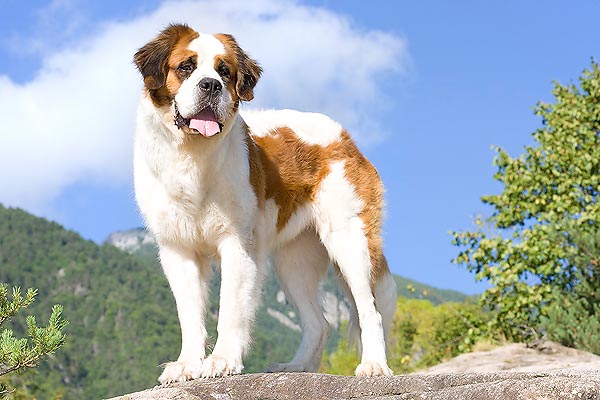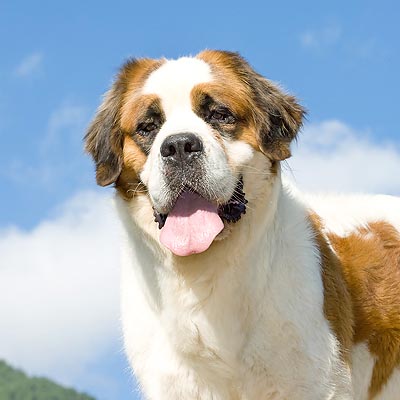Family : Canidae

Text © Pietro Paolo Condò – Giudice Enci-fci

English translation by Mario Beltramini

The Saint Bernard descends, like almost all molossoids, from the Tibetan Mastiff © Giuseppe Mazza
The Saint Bernard is big, with a vigorous and muscled shape all over, with a powerful head and intelligent expression, agile in spite of its massive body.
The head is mighty; the skull is compact and broad, the nasal-frontal gap sharp, the muzzle short, the truffle broad and black. The eyes are of medium size, dark brown, with intelligent end friendly expression. The ears are of medium size too, adhering rather high and with the shape of a rounded triangle.
The neck is quite robust with well pronounced dewlap, the thorax is much circled and the back is of excellent width. The limbs are strong and muscled. The tail is long, heavy and is pointed at the end.

Affectionate, protective, of a proverbial generosity © Mazza
Two varieties do exist: the short-haired (thick, short, adherent and smooth hair, thighs with slight breeches and tail with longer hair), and the long-haired (hair of medium length, from smooth to slightly undulated, never curled or ruffled; tail with thick hair and of moderate length).
Admitted colours: white and red or red and white (the white is compulsory on chest, feet, tip of the tail, nasal reed, frontal band and spot on the nape. Much desired is the white collar.
In the males, the height at withers must absolutely be not less than 70 cm; in the females 65 cm; the weight, 60-80 kg (some specimens may weigh more than a hundred).
It is a very affectionate dog and protective towards its master and the family, patient with children.
Quite reserved with the harmless foreigners, as a guardian, if necessary, it can rely on its imposing massive structure which is already, by itself, a good deterrent.
Should this not be sufficient, it proves strong and courageous; it quickly compels to the flight its victim. It shows a proverbial generosity in the rescuing operations.
→ To appreciate the biodiversity within the DOG BREEDS please click here.
